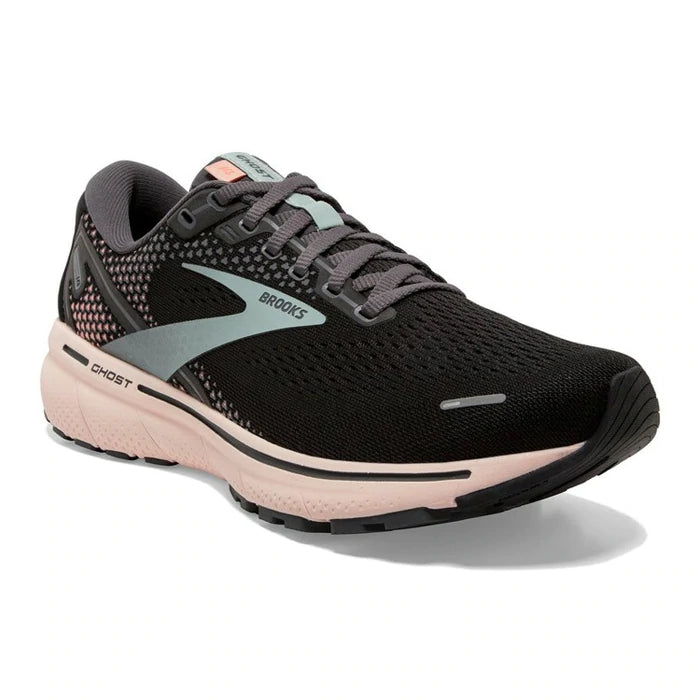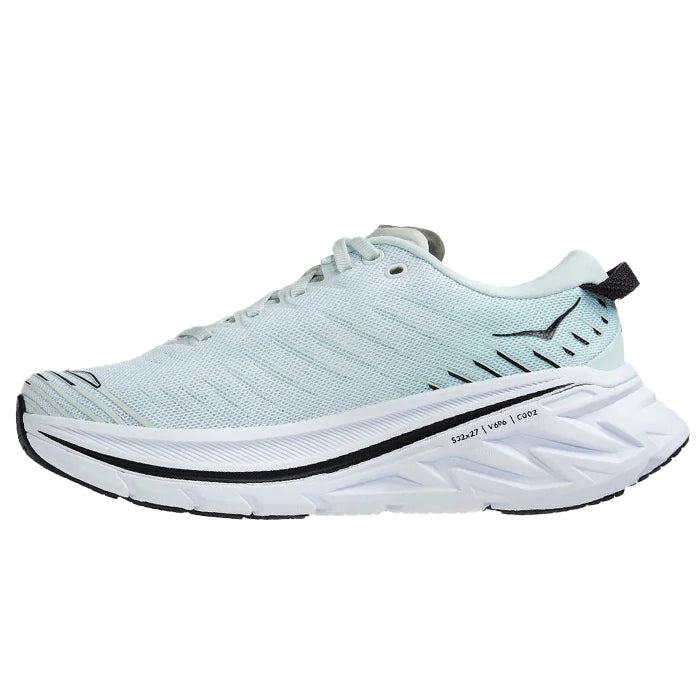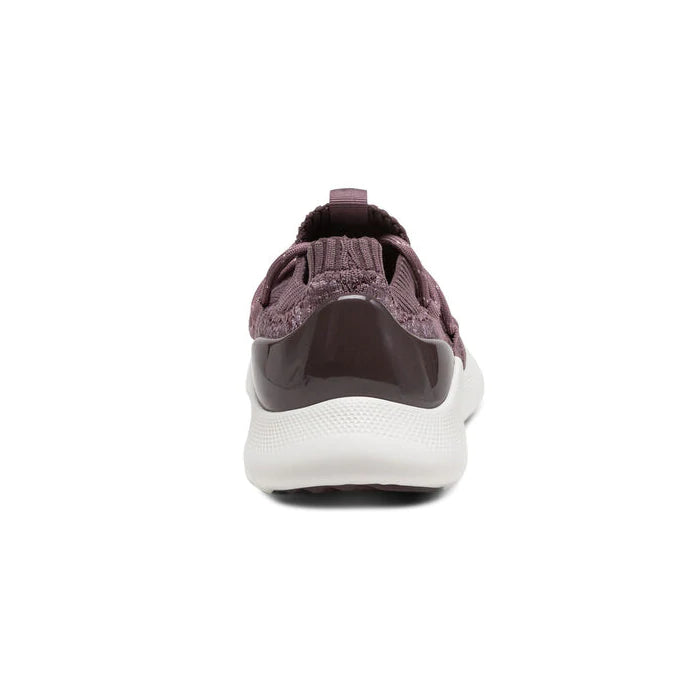To go for a walk, you don't need a lot of flashy gear. However, a solid pair of shoes is a must. You'll stop walking if your feet hurt. As a basic rule, don't put your health at risk by wearing shoes that hurt or injure your feet. A basic guide to help you find the best women's walking shoes is here!
What Makes Walking Shoes Different?
If a shoe doesn't fit properly, how stylish it looks doesn't matter. The easiest way to ensure you don't get the wrong walking shoe is to go to the best athletic shoe store near you or where serious runners shop. In many cases, personal trainers can help. Make sure to keep an eye out for establishments that provide foot examinations. If they can locate a shoe anatomically suited to your foot, it's a sure sign that they can find one for you.
Walking shoes and running shoes are distinct in that they cater to different aspects of gait. Most walkers use the heel of their foot to initiate contact before moving forward. Runners, on the other hand, strike in the midsole and require a heel that is built up and flared to provide stability and cushioning. Walkers don't require either of these.
The forefoot of a good walking shoe must be supple enough to allow your foot to move smoothly with each step. Shin splints can result as a result of this.
Finding the Correct Walking Shoes
You will need a pair of walking shoes to go for a stroll, which is the most important piece of gear you'll need. Finding a pair of shoes specifically intended for walking rather than a pair of running shoes or leisure sneakers is essential.
Even though it's an extra cost, an optimal walking shoe will pay for itself in the long run by providing better comfort and reducing the likelihood of injury, instability, and foot pain.
Over Pronation
It's possible that motion control shoes will be necessary if you overpronate (walk with your foot tilted too far inward toward the arch). For those who are overweight or have specific mobility concerns like a weak hip or knee, this is especially important. As a result, motion control shoes tend to be heavier but provide a more stable platform for walking.
Consult a shoe store employee about getting your gait evaluated if you're not sure. If your pronation is especially severe, you may need to obtain a bespoke pair or discover an orthotic insole that will provide the support you require.
If you’re an athlete or someone who enjoys running or power walking and your pronation isn’t neutral, consider going to see a professional for not only gait assessment but also gait treatment. They can suggest exercises to help you run or walk more properly and special shoes or orthotics can help you avoid possible injuries.
Under Pronation
Supination is a popular term for underpronation. When standing, the instep or arch of a person with an underpronated foot may be particularly rigid, making it difficult for them to move around freely. As a result of this, the outer border of the foot bears a greater portion of the weight. Shock absorption is impaired when one or both feet fail to pronate and roll outward excessively. Over time, this additional stress can cause harm to the joints and muscles of the back and lower limbs.
How To Choose the Right Shoe?
When exercising, good balance and posture can be enhanced by wearing the proper walking shoes, whereas ill-fitting walking shoes might cause discomfort or increase one's risk of injury. It's ideal to go to a running shoe business that specializes in biomechanics and can give a shoe based on an individual's exact biomechanics (this service is not typically found in large chain stores).
Walking Shoe Stability
If you're looking to improve your balance but don't have a severe problem, stability shoes are the best choice. Using these tests, you can determine if a shoe is stable enough for your feet:
- Bend the toe of the shoe upward while holding the heel. At the ball of the foot, not midway along the arch, the shoe should bend.
- Twist the shoe by grabbing the heel and toe with both hands. Moderate resistance is what you're looking for.
Walking Shoe Cushioning
Cushioned shoes are better for long-distance walkers (over five miles at a time). Cushioning levels for running shoes are divided into four categories: barefoot, minimal, moderate, and maximum. In the end, the degree of cushioning is a personal taste. Instead of hiking boots, consider a pair of road-runners or even trail runners if you need ample cushioning.
Because walking puts less stress on your feet than running does, you can get away with wearing less padding. For many walkers, an evenly cushioned shoe is preferred to one with a large heel stack— which has way more and extra cushioning in the heel than in the toe.
Walking Shoe Fit
People who don't require motion control should choose performance trainers, which are light and comfortable walking shoes.
Considerations like technology, reviews, and trends are secondary to the importance of a garment's fit. Toe and heel blisters, as well as more serious foot disorders, can be avoided if shoes are properly fitted. The easiest method to get a shoe that will last you for many miles is to buy one that fits you properly.
A good fit is snug in all the right places but not too tight. The heel and midfoot should be snug, but there should be some wiggle area for your toes to spread out. Make sure there is enough room between your longest toe and the shoe end. Fitness walking shoes can benefit from the same shoe-fitting strategy as running shoes: Buy a half-size larger than you normally would in a pair of casual shoes.
Tips For Choosing the Right Shoe
Want some tips for choosing the ideal pair of women’s walking shoe? Follow the next exercises:
Look at the Heels
Only an inch above the rubber sole under the ball of your foot, and it should not have any flare to it.
Bend It
Additionally, it should easily flex at the ball of the foot rather than the center of the arch when twisted latitudinally.
Poke the Toe
Ideally, the toe should rock somewhat when it is prodded if the design is good enough.
Foot Basics
Consider the next foot basics when purchasing new women’s walking shoes:
Feet Change As You Age
They aren't going to become any bigger. As we become older, our narrow feet may widen but not lengthen due to this process. Arches widen and sag as a result of a decrease in the flexibility of the tissues that support them, just like other body components.
Foot Type Matters
Everyone has a unique foot form, so no two people can wear the same pair of shoes. Forefoot room is more of a necessity for those with a square foot form. As a result, avoid wearing shoes with a thin or pointed front. Shoes with a square or round toe are the most comfortable.
Pain’s a Factor
If you have problems with your hips, knees, ankles, or feet already, not wearing the correct shoe can make them worse.
Your bones, joints, and the soft tissues that support them can be put under stress and pain after even a short period of time in the wrong shoes.
Tips for Finding Shoes That Fit
Buy The Right Size
Never base your shoe purchase on the size label found inside. Go by how they feel as you walk on them. If you measure your feet, you may not be able to tell the difference between a shoe's size based on style, brand, firm, and country of origin.
Match Shoes to Your Foot Shape
Make sure your shoes conform to the shape of your entire foot as precisely as possible.
Wiggle Your Toes
In order for your feet to move easily in the shoes, the toe box should be large enough to allow for this but not so loose that your feet slide around. A roomy and wide toe box is always good to look out for when buying most kinds of shoes.
Bring Your Shoe Inserts
Don't forget to put on your socks or any other special inserts you regularly use while trying on shoes.
Don’t Expect Shoes to “Stretch”
The shoes should fit comfortably before you buy them if they don't feel right. To reduce foot pain and damage, it is best to avoid shoving or stretching your feet into shoes that don't fit properly.
Take a Walk
To find out how they feel, try them on and walk about in them. How much room do you have on the balls of your feet? Do the heels fit snugly, or do they pinch or glide off the foot?? Avoid the temptation to think that the shoes will "break in" or "stretch out" with time. Start with a pair of shoes that are a good fit.
Top 10 Best Walking Shoes For
Women
HOKA Gaviota 3 Women’s Walking Shoes
The new HOKA Gaviota 3 provides excellent cushioning and support. This durable road shoe is built to give long-lasting comfort and support. The Gaviota 3 does away with standard support shoe conventions by providing more shock-absorption foam than the Gaviota 2. This model's engineered, breathable mesh upper mesh provides comfort, that's perfect for bunions or hammertoes.
Brooks Adrenaline GTS Women’s Walking Shoes
An adaptive foam midsole provides long-lasting comfort in the Brooks Adrenaline GTS and excellent ankle support. The midsole now has responsive foam throughout, giving shock absorption, comfort, and a smoother transition from heel to toe - great for people with Plantar Fasciitis. The GuideRails® provides on-demand support when walking, allowing your hips, knees, and joints to move naturally.
Brooks Ghost 14 Women’s Walking Shoes
Brooks' fan-favorite style just got better! The new Brooks Ghost 14 boasts DNA LOFT foam cushioning throughout the midsole for a plusher ride. These shock absorbers are ideal for plantar fasciitis. Your favorite seamless mesh top and sturdy on-foot sensation return in the Ghost 14. The upper is a good balance of roomy and secure. The Ghost's effortless smooth ride makes it a best seller!
HOKA Bondi Women’s Walking Shoes
The Bondi X is a treasure, a fully cushioned 100% vegan sneaker built to go the distance. An enlarged rocker allows for faster acceleration and smoother toe-offs in the Bondi X. HOKA's extended crash pad is made of our softest foam ever. The Bondi X's progressive upper with embroidered TPU yarn will get you everywhere you want to go!
Brooks Addiction Walker Women’s Walking Shoes
The Addiction Walker now comes in a trendy suede upper. The bottom is now approved for slide resistance (SATRA TM144:2011)! The Extended Progressive Diagonal Rollbar provides ultimate support by positioning arch support to direct and keep your body in its natural motion. A revolutionary cushioning called BioMoGo DNA in this shoe model adapts to your stride, weight, and speed.
Dansko Henriette Women’s Walking Shoes
The Dansko Henriette will sport your casual appearance. The leather and recycled nylon upper is pretreated with 3M Scotchgard to keep it looking new for miles. A silky textile lining with antibacterial protection keeps odors at bay. The EVA footbed and nylon shaft provide stability and shock absorption for plantar fasciitis sufferers. In addition, the Dansko Henriette model offers a detachable footbed for orthotics.
Aetrex Dani Women’s Walking Shoes
The perfect pair of sneakers, designed for both comfort and style. Aetrex Dani has arch support, extra heel padding, a super-soft knit material, and a lightweight, durable rubber outsole. This sneaker is ideal for doing errands or doing something fun on the weekend. For persons with heel pain, arch pain, wide feet, plantar fasciitis, or a high instep, the Aetrex Dani model is one of the best lightweight walking shoes recommended.
Aetrex Carly Women’s Walking Shoes
On long days, the Aetrex Carly stylish sneaker with arch support will give you the LIFT you need. They're ideal for long walks and days on foot! You'll be comfy on your busiest days thanks to arch support, memory foam cushioning, a padded heel, and a flexible weave. Plantar fasciitis and regular foot pain can be relieved with arch support.
New Balance 1080 Women’s Walking Shoes
The New Balance 1080 model is designed to give all-day comfort. This soft, plush shoe has New Balance's proprietary Fresh Foam on the underfoot, providing quick comfort to anyone suffering from plantar fasciitis or metatarsalgia. The elastic knit upper provides 360-degree comfort, which is ideal for bunions. When you wear this trendy twist on a running shoe, you'll be the center of attention!
New Balance 990 v5 Women’s Walking Shoes
The dual-density collar foam, Encap PU ring with EVA (Ethyl Vinyl Acetate) core, and the ENCAP® midsole technology in the New Balance 990 v5 model provide support and optimum durability. The New Balance MADE U.S. is a high-end collection with a 70 percent or higher domestic value.
FAQ
Why are my current walking shoes so uncomfortable, and what should I look for in new shoes?
If your current walking shoes or walking sneakers are not the best fit for you and your lifestyle, then perhaps you need to try certain tips to ensure they match you and your feet.
Remember to wear the shoes indoors when buying a new pair. You can use a shoe stretcher or cushioning like rolled-up socks to ease any tight regions. That way, your feet will thank you for it, and you can enjoy the try-on without any inconvenience.
Also, take into account that slow and steady is for sure the best approach to avoid painful blisters, ingrown toenails, overpronation, excessive rubbing, sore feet, and heel pain.
Why should I get a free foot analysis when shopping for women's walking shoes?
Biomechanics, the study of how your body moves and operates, is another term for a gait analysis. Mobility, flexibility, stability, and functional strength are all affected by this condition. A poor running stride puts more stress on your body if you're not doing something as simple or essential as walking and running correctly.
Your running style, biomechanics, and gait can all benefit from a gait analysis. If you're a supinator, the running gait analysis might help you determine how much support you'll require.
Should I use arch supports in my walking shoes?
Individuals with flat feet, in particular, may benefit from arch support in order to avoid injury. Medial tibial stress syndrome can be caused by abnormal foot pronation (shin splints). By controlling your pronation, you can lower your risk. It is possible to reduce the tension on the shins and prevent medial tibial stress syndrome by using shock-absorbing insoles.

Jerick Sobie
Since 2005, I have been a dedicated small business owner specializing in footwear retail. With over 20 years of experience, my business partner and I have helped customers find the perfect shoes that combine style, comfort, and quality. Our expertise extends beyond local sourcing—we have traveled internationally to discover high-quality footwear that meets our customers’ needs. In addition to running my business, I have participated in numerous health fairs and educational seminars, sharing my knowledge on proper footwear and foot health. Committed to providing exceptional service, We carefully curate our selections to ensure the best fit and support for every customer.



































































